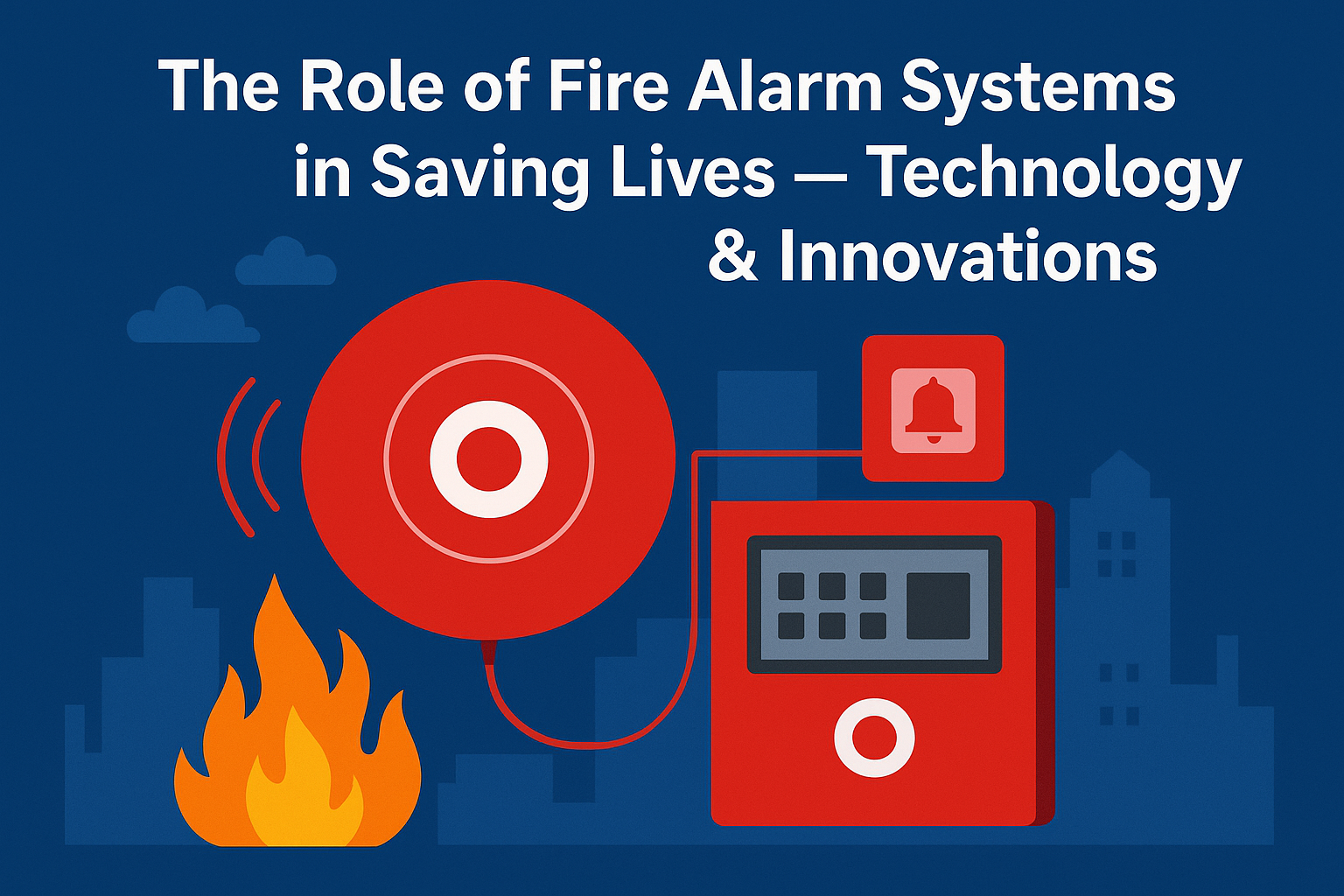
Every year, thousands of fire-related accidents occur around the world, leading to tragic loss of lives, property damage, and business disruptions. In most of these cases, one thing is common — delayed detection. A few seconds can make all the difference between a minor incident and a devastating disaster. This is where fire alarm systems play a crucial role. They act as the first line of defense, detecting early signs of fire and alerting occupants in time to take action. Modern fire alarm systems are smarter, faster, and more reliable than ever, helping save countless lives and preventing major losses.
Core Components of a Modern Fire Alarm System
A fire alarm system is a network of interconnected devices designed to detect fire and notify people quickly. Its key components include:
Smoke Detectors: These sensors identify smoke particles in the air, signaling the earliest stages of fire.
Heat Detectors: Ideal for environments with high dust or steam, these sensors activate when temperature rises abnormally.
Control Panels: The brain of the system that receives signals from detectors and triggers alarms or suppression mechanisms.
Notification Appliances: Devices such as sirens, strobes, and voice alarms that alert occupants to evacuate immediately.
System Integration: Advanced fire alarms integrate seamlessly with sprinklers, suppression systems, and emergency lighting to create a coordinated safety response.
Together, these components ensure that fire threats are detected instantly, communicated effectively, and acted upon efficiently.
Technological Advancements in Fire Alarm Systems
Technology has transformed how fire safety systems operate today. Modern systems are not just reactive — they are predictive and intelligent.
Smart / IoT-Enabled Detectors: These connect to networks, allowing real-time monitoring and alerts on mobile devices.
Wireless Alarm Systems: Ideal for large buildings or retrofits, they eliminate the need for complex wiring and reduce installation time.
Multi-Sensor Detectors: Devices that combine smoke, heat, and carbon monoxide detection to reduce false alarms and enhance accuracy.
Remote Monitoring via Apps or Cloud: Building managers can monitor fire safety status, receive fault alerts, and review reports from anywhere.
These innovations have made fire alarms more reliable, efficient, and accessible, ensuring protection 24/7 without manual intervention.
Challenges & Myths About Fire Alarm Systems
Despite their importance, fire alarm systems are often misunderstood. One of the most common challenges is false alarms, which may result from improper installation, poor maintenance, or dust accumulation in sensors. Regular servicing can easily prevent such issues.
Another myth is that fire alarm systems are expensive and difficult to maintain. In reality, they are a cost-effective investment when compared to the potential damage caused by a single fire incident. Additionally, with the availability of wireless and modular systems, installation has become quicker and more affordable for small and large facilities alike.
Proper design, installation, and periodic maintenance ensure that fire alarms perform accurately without unnecessary disruptions.
Real-Life Success Stories
PS Controls has successfully implemented fire alarm systems for a wide range of clients — from corporate offices to industrial plants. In one recent project, a smart detection system identified an overheating electrical panel before it caused a fire, allowing the team to take immediate preventive action. The incident highlighted how modern detection technology not only prevents fire but also saves valuable equipment and downtime.
By adopting reliable and advanced systems, organizations can protect both people and property while maintaining operational continuity.
Tips for Choosing the Right Fire Alarm System
Selecting the right fire alarm system requires careful consideration of your building’s layout, risk level, and future needs. Here are some key tips:
Compatibility: Ensure your alarm system integrates seamlessly with existing fire safety or building management systems.
Scalability: Choose a system that can grow with your facility, allowing easy expansion or upgrades.
Regulatory Compliance: Make sure the system meets all national and international fire safety standards, such as NBC and NFPA.
A trusted provider like PS Controls can guide you through the process, offering customized solutions that fit your building type and operational requirements.
Conclusion & Call to Action
Fire alarm systems are not just electronic devices — they are lifesaving tools that ensure early detection, timely alerts, and safe evacuation. With the rapid advancements in technology, businesses now have access to smarter, more responsive fire safety solutions than ever before.
If your current fire alarm system is outdated or you haven’t yet installed one, now is the time to act. Contact PS Controls for a comprehensive fire safety audit and upgrade to a modern, compliant system designed to protect what matters most — people, property, and peace of mind.
